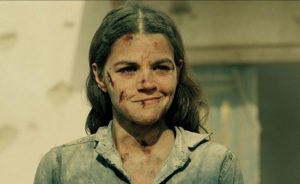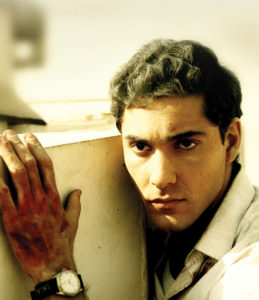There’s just as much singing and dancing as there is armed combat in Israeli director Avi Nesher’s film “Image of Victory.”
In the final days of the Nitzanim kibbutz in late 1947 and early 1948, in order to cope with the mishmashed squad of rejected soldiers and former prisoners sent to protect the village from an impending attack from Arab forces, residents of the kibbutz bang on the table and sing “Dayenu.” They dance in partners to whatever tunes a teenage soldier can muster to play on an out-of-tune piano.

Meanwhile, Egyptian journalist-turned-documentarian Mohamed Hassanin Heikal (Amir Khoury) is assigned to film the ambush in hopes of getting footage to propagandize the Egyptian king’s military prowess. The hungry, wannabe filmmaker is more concerned with finding good angles than he is with the war continuing around him.
On both sides of the violence, “Image of Victory” balances the humanity and ferocity of war. The film starts streaming July 15 on Netflix, one of the first Israeli films on the streaming service.
But as Nesher attempts to tell a balanced story with protagonists on both sides of the Israeli-Arab war, the film’s own ambition and idealism washes away some of its own potency.
The film, which begins with a flashforward to Hassanin as a middle-aged, well-established journalist, is predicated on Hassanin’s fascination with Mira (Joy Reiger), a young mother and Nitzanim resident who commits an unknown act of heroism.
The audience comes to know Mira as headstrong, whip smart and fiercely loyal
to her village and her young son, becoming the de facto leader of the kibbutz’s futile efforts to stave off attacks from Arab forces.
As Hassanin takes an interest in filming a budding love story between an Arab soldier and a woman from a nearby town, he establishes himself as a romantic, thinking that the power of love will appeal to the king of Egypt more than a story of a military victory.
Hassanin travels with a group of raggedy bearded
soldiers in soiled clothing, and his own white suit and clean shaven face betray his place in the war. He’s more loyal to a good story than he is to his country.

“You see your enemy as a real person, and it does something to you,” he said.
Nesher is keen to humanize soldiers on both sides of the war beyond the story’s two protagonists. Arab soldier Salman gives soft looks to the woman he is trying to court; the kibbutz’s ragtag soldiers enjoy a swim after alluding to their survival of the Holocaust.
But the film fails to deliver on many of the character’s stories, and though Nesher is generous enough to give most everyone a backstory, the lack of attention to each individual is unsatisfying. As many of the characters in the film meet tragic ends, the desired effect of drawing sympathy from the audience is achieved; it would perhaps be more effective if the audience could remember each character’s name.
The same can be said of the story of the two protagonists. Though a complicated and charismatic force, Mira’s story gets lost in the shuffle of battle, and though her story has closure, the film is quick to assign meaning to it without giving the audience a chance to make up their own minds about her.
Conversely, as Hassanin is forced to reckon with his actions as a young man complicit in war propaganda, it provides little resolution to his angst and not enough context in
the film to create fulfilling meaning to him.
Though the film’s two hour run time is not long enough to flesh out the story’s characters, it gives enough detail to ensure they are all endearing, even if underdeveloped.
“Image of Victory” is a story about the horrors of war, though it sometimes wants to be a love story, an anti-war story and a fictional memoir all in one. Just as the ambitions of Nesher’s characters get the best of them, “Image of Victory,” in some moments, seems to suffer the same fate. Nesher nevertheless tells the story based on true events with assured authority.







